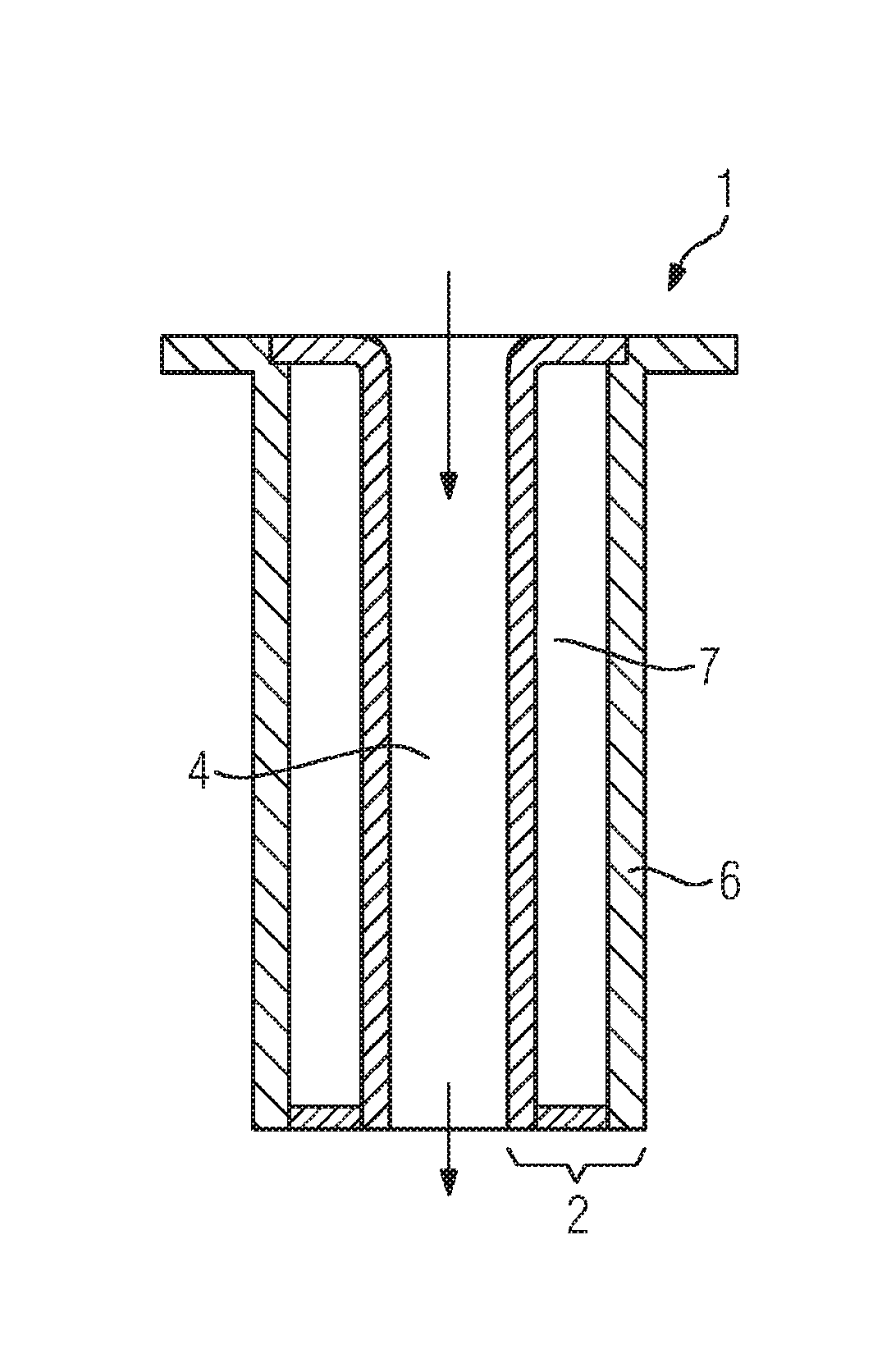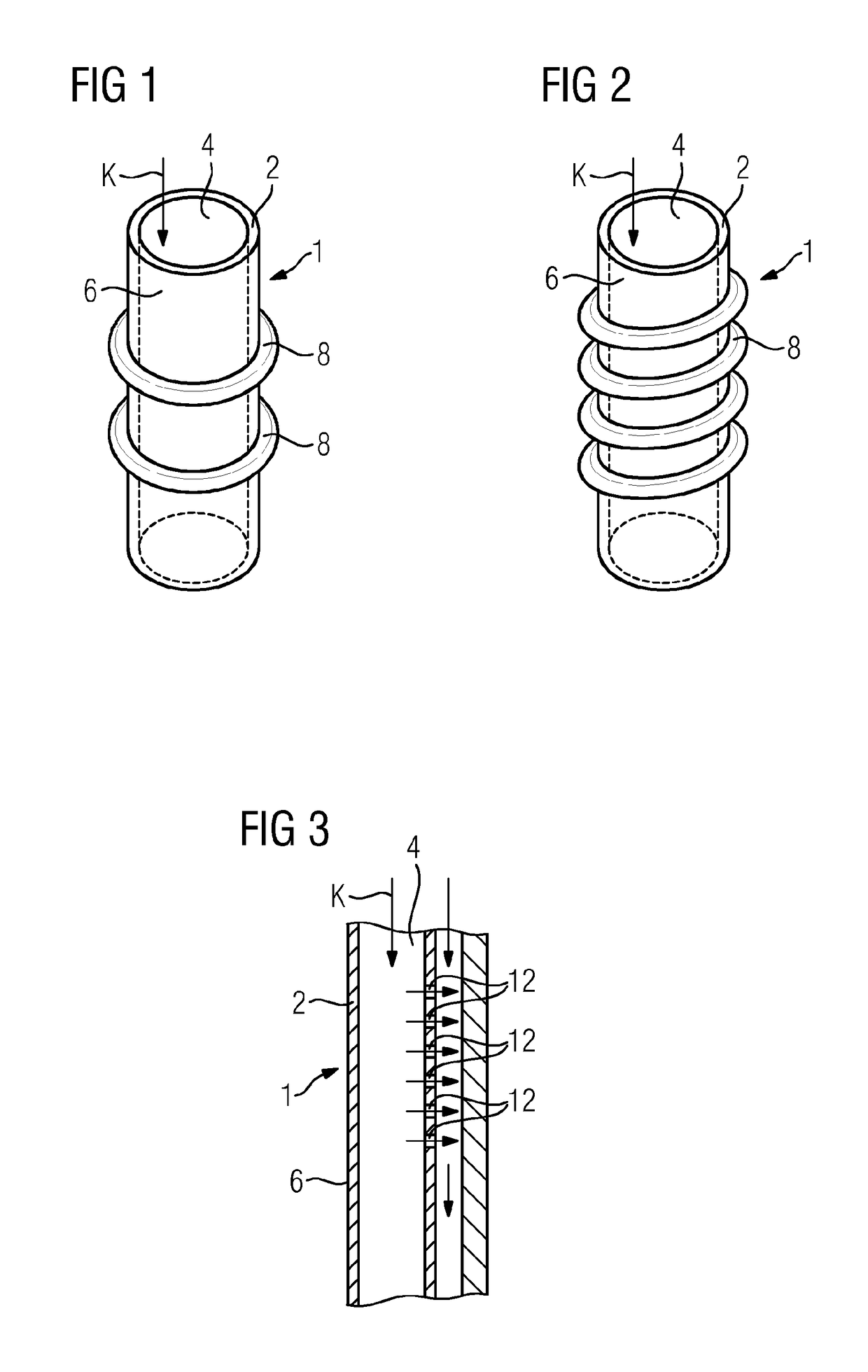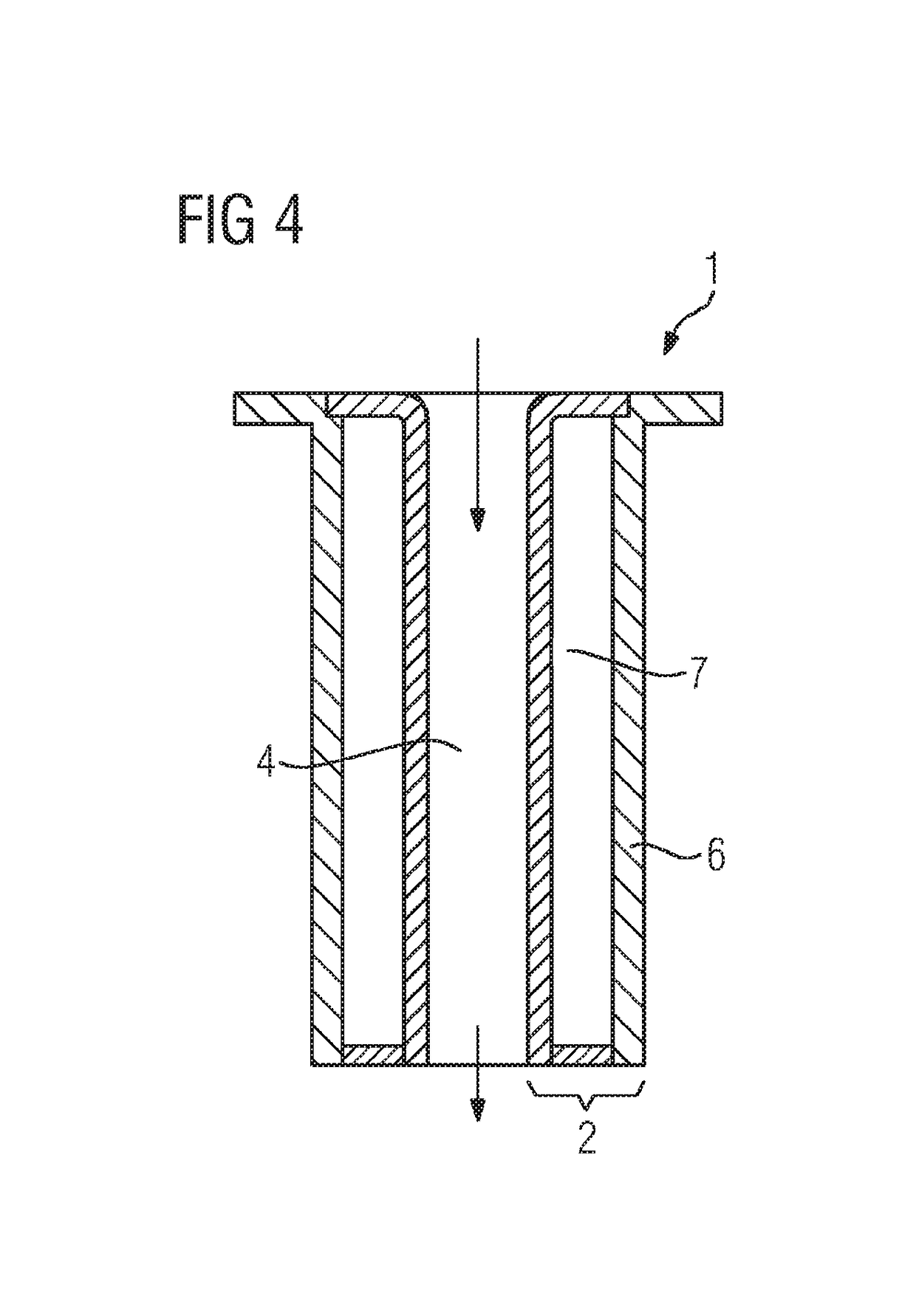Coolant bridging line for a gas turbine, which coolant bridging line can be inserted into a hollow, cooled turbine blade
a technology of cooling line and gas turbine, which is applied in the direction of machines/engines, stators, mechanical equipment, etc., can solve the problems of high heat generation, high cost, and inability to use cooling line to improve service li
- Summary
- Abstract
- Description
- Claims
- Application Information
AI Technical Summary
Benefits of technology
Problems solved by technology
Method used
Image
Examples
Embodiment Construction
[0024]Identical parts are provided with the same reference signs in all figures.
[0025]FIG. 1 shows a cylindrical coolant bridging line 1. This is inserted into a hollow, cooled turbine guide blade (not shown) and extends between the blade roots of the turbine guide blade. The coolant bridging line 1 has a wall 2 which separates the inner side 4 and the outer side 6 of the coolant bridging line 1. Coolant K, in the exemplary embodiment air, is conveyed inside the coolant bridging line 1.
[0026]Annular turbulators 8 are arranged on the outer side 6. In the alternative exemplary embodiment according to FIG. 2, however, the turbulators 8 are arranged in a helical manner. Equally, turbulators not shown in more detail can be arranged on the inner side of the coolant bridging line 1. In addition, the coolant bridging lines according to FIGS. 1 and 2 are provided with a ceramic coating.
[0027]FIG. 3 shows a coolant bridging line 1 together with the adjacent end side 10 of the guide blade into...
PUM
| Property | Measurement | Unit |
|---|---|---|
| angle | aaaaa | aaaaa |
| mechanically useful power | aaaaa | aaaaa |
| thermal stresses | aaaaa | aaaaa |
Abstract
Description
Claims
Application Information
 Login to View More
Login to View More - R&D
- Intellectual Property
- Life Sciences
- Materials
- Tech Scout
- Unparalleled Data Quality
- Higher Quality Content
- 60% Fewer Hallucinations
Browse by: Latest US Patents, China's latest patents, Technical Efficacy Thesaurus, Application Domain, Technology Topic, Popular Technical Reports.
© 2025 PatSnap. All rights reserved.Legal|Privacy policy|Modern Slavery Act Transparency Statement|Sitemap|About US| Contact US: help@patsnap.com



